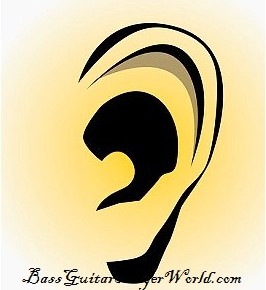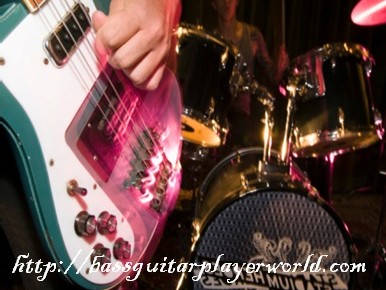Natural Harmonics – Create High Pitch Bell-Like Sounds
 Have you ever heard a note, that wasn’t quite a note? Maybe it sounds a bit faint, or a little high and fragile?
Have you ever heard a note, that wasn’t quite a note? Maybe it sounds a bit faint, or a little high and fragile?
Chances are, what you heard was a natural harmonic.
Harmonics are one of the most popular techniques in bass guitar. This is simply because they sound so nice within the context of a song. Harmonics add a gentle undertone to a piece, and sound fragile, and frail, and utterly beautiful.
But What Are Harmonics?
Natural harmonics on bass guitar are simply notes that are played by eliminating the overtone of a note. This means, in its barest form, that the note is prevented from vibrating as a regular note. By eliminating the notes ability to vibrate, all that is left is the harmonic portion of the note.
So How Are They Played?
Rest your finger on the twelfth fret of your G string. Do not fret the note; simply rest your finger on the string. Now, pluck the string with a pick or between your thumb and index finger. You may hear a slight him that is almost identical to the twelfth fret note (E), but is a bit higher and fairer. This is a natural harmonic.
Natural harmonics are produced in one of two places; over the fret itself, or over the fret wire.

Every single note has a natural harmonic. No matter where you place your finger on the fret board, a harmonic will be made so long as you rest your finger above the note without fretting it. Some are hard to hear, and some simply sound dead or unappealing, but nonetheless they are still harmonics.
The best way to get a fill sound from a harmonic is to play it over the fret wire closest to the next fret. This doesn’t mean you can’t produce a harmonic over a fret; hopefully, if you did as we instructed, you just did.
It simply means that stronger harmonics are made by laying your finger over the string above the fret wiring instead. This is because fret wiring, naturally, impedes a strings ability to resonate, or vibrate at all.
Don’t Believe Us?
Try fretting a note on your fret wire.
Sounds squashed and awful, right?
This trait lends itself perfectly to a harmonic, because in order to create a harmonic, the string must be impeded upon.
Now, this doesn’t mean that you should try palm muting, or simply squashing the notes against the fret wire to create harmonics; it won’t work. It does mean, however, that instead of playing our twelfth fret harmonic by laying our finger over the twelfth fret, we can get a better sound by simply laying our finger over the fret wiring that separates the twelfth fret from the thirteenth fret.
Now that you know how to play natural harmonics on bass guitar, the most important thing to do is to practice them. Try adding harmonics into a song, or try fretting them with different fingers to teach your digits the amount of pressure required. Remember to keep an open mind when you learn to play bass, and good luck!
Transform Yourself From An Average Player Into a Competent Bassist
JamPlay has thousands of video lessons that are conveniently arranged in structured lesson sets. With high quality instructions from world renowned bassists, Jamplay is an unparalleled learning resource. Whatever your genre preferences, you’ll find something here to help you improve your current level of playing.
Related Articles
Comments are closed.





